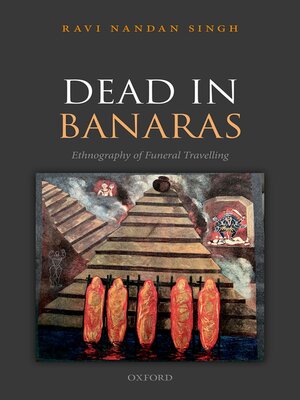
Sign up to save your library
With an OverDrive account, you can save your favorite libraries for at-a-glance information about availability. Find out more about OverDrive accounts.
Find this title in Libby, the library reading app by OverDrive.



Search for a digital library with this title
Title found at these libraries:
| Library Name | Distance |
|---|---|
| Loading... |
Ethnographies fatefully rely on chance encounters and mysteriously so such encounters come true. "Dead in Banaras" is an instance of just such a fateful chance encounter. In its inception, it set out to follow the 'dead' across multiple social locations of crematoria, hospital, morgue and the aghorashram, in order to assemble a contemporary moment in the funerary iconicity of the well known North Indian city of Banaras. The crematoria in plural because the open-air manual pyres and closed-door electric furnaces sit side by side within the symbolic inside of the city. The hospital and morgue became chosen destinations because in the local moral world, the city is a medical metropolis anchored by a famed university hospital and storied through real life dramatic narratives of medical emergency, saving and untimely death. Aghorashram on the other hand as an urban Shaivite clinic and hermitage for sexual and reproductive cures works with funerary substances as pharmacopeia. Early on, while undertaking fieldwork, these funerary journeys of the' dead' had a chance encounter with the author's father's death in the city. The same set of places, thereafter, spoke through the sensory logic of the author's father's death. Dead in Banaras is, thus, both an ethnography of being in the dead centre of a city and an autobiographical funeral travelling (Shav Yatra) that narrates the city through a mourner's logic of using the pyre to illuminate the dead as a multiplicity.







